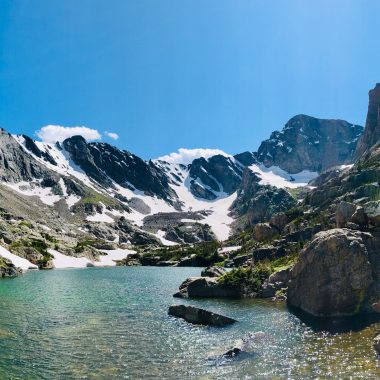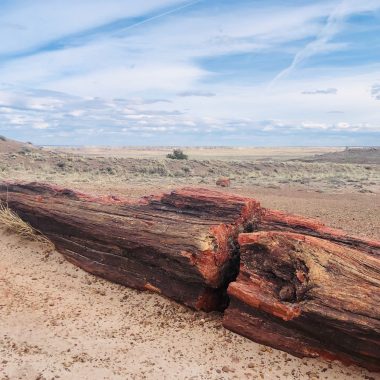When I was a sophomore in high school, my family moved to Eugene, Oregon. It was May, in what would have been the early start to the summer season in California. I remember not seeing the sun for the first few weeks we were there. For those first few weeks, there was perpetual cloud cover over the Willamette Valley, a place thick with pine trees alongside a lush riparian landscape. And then, in June, just when it seemed the sun would never come out… it did. For three glorious months, it stopped raining (unless you live on the coast).
The landscape transformed from a monochrome set of green, greys and blacks to a stunning array of color and natural beauty, lit by a warm but never overbearing sun. It was, for a California city kid, a marvelous way to experience the outdoors. The next few summers I road-tripped all over the state, taking it all in. Waterfalls, mountain forests, lakes, and the astounding Oregon coast. And then, at 18, I left and never returned. My family moved back to California before I finished college and, later, I settled in Northern California. Now, all these years later, with a personal sabbatical and mega six-month cross-country US road trip in the offing, it was time to go back.
This July, I took the van and my two dogs on a two-week road trip through Oregon, traveling in an 1100 mile loop around the state. From Hell’s Canyon on the eastern-most border with Idaho, to Mt. Hood near Portland, down the Oregon coast, and then over to Crater Lake National Park. I’m embarrassed to say that, during the time I lived there, I never visited the eastern part of the state or Crater Lake. So this trip was as much about filling in the blanks in my Oregon experience as it was revisiting the past.

Hells Canyon
I started this Oregon trip in Hells Canyon, which is tucked just on the border with Idaho in the upper easternmost part of the state. Hells Canyon is the deepest river gorge in the United State, with a maximum depth of over 7900 feet (that’s 2000 feet deeper than the Grand Canyon). The canyon was cut through an ancient lava basin by the Snake River over the last two million years. Because it’s walls are mostly comprised of basalt lava, the Canyon has a dark, jagged appearance that is most likely the source of its name. While the Snake river used to run wild through the canyon, it is now tamed by dams, creating a boat-friendly stretch of water through the canyon. The water was so calm near our campsite in Copperfield, OR, that my dogs were able to jump in and cool off from the near 100 degree temperatures.

You can access the Hells Canyon Recreation area from the west via Hwy 86 or the south, via Hwy 71. Both converge in Copperfield, just before Hells Canyon road, which takes you 22 miles into the heart of the canyon. At the end of Hells Canyon road there is a National Recreation area facility. From there, you can take a boat ride further up into the canyon to its deepest point or catch a trailhead to explore on foot. Plan at least a few hours to take everything in on Hells Canyon road, more if you want to do a boat ride. I highly recommend taking the boat trip, as it’s the only way to see the deepest part of the canyon. Unfortunately, I didn’t know this ahead of time and wasn’t able to go up river.

My dogs and I did set out on foot to do the 1+ mile short nature trail from the Recreation Area headquarters. It was exceptionally hot that day and the trail was thick with poison oak. While this wasn’t the most pleasant hiking experience I’ve had this summer, it was nice to be able to get further back into the canyon and see it at its most wild. There are over 900 miles of trails in the Recreation Area, so it’s a place that begs to be explored. I’d like to go back again and tackle a few of these trails, but perhaps in spring when it’s not bathed in sweltering heat.
Once you’ve explored the interior of the Canyon, there are a few options to get up onto the canyon rim. With the exception of the Hells Canyon Overlook, most of the other options are dirt National Forest roads, which wind thousands of feet up on either the Oregon or Idaho sides of the canyon. With a 24-foot low-clearance van, I decided to take the paved route and head up to the Hells Canyon Overlook.

The overlook is accessed by taking Pine Road (NF-39) from Hwy 86. Pine Road takes you through a beautiful swath of the Wallowa-Whitman National Forest. After a short 45-minute drive, the overlook provides a stunning look at the surrounding canyon rim (although you can’t see to the bottom from here) and the Seven Devils peaks in the distance. Sadly, the day we were there, the view was obscured by smoke from all the summer wildfires. Even with the haze, it was still an incredible sight. The scale of the canyon is something that’s hard to convey in photos, you really have to see it in person. The landscape descends in overlapping layers here in such a way that it seems like a massive, never-ending abyss.

Tips for Camping and Facilities
Hells Canyon is in a very remote part of Oregon. Make sure you’re fully stocked with supplies, water, and gas. Once you’re in the canyon there are no gas stations or other facilities. We camped at the Idaho Power Copperfield Campground, which is an excellent spot on the Snake River for tent or RV camping (with full hookups). If you want something a little more remote, head up Homestead Road, going north from Copperfield, and you will find a number of National Forest camping areas along the Snake River.






